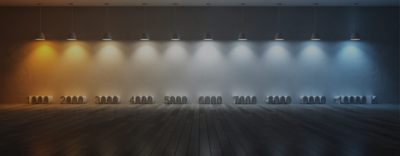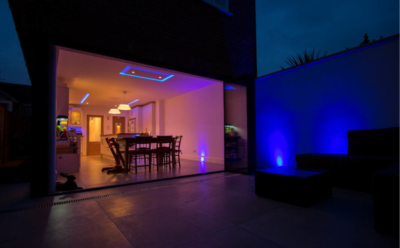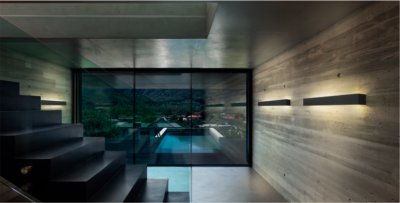HOME LIGHTING – The Evolving World of Different Light Bulbs & Light Switches
Mayflower London details the light bulbs and light switches available for use as part of a fresh lighting installation and a fully integrated, bespoke SMART Home automation system.
So, you’ve decided that you want to replace or upgrade the existing lighting system in your home, but all you know about household lighting is that it involves light bulbs and switches, and that they won’t work without electricity.
In this blog, Mayflower London illuminate the different types of light bulbs and the variety of light switches available to use at home as part of a fresh lighting installation or a fully integrated, bespoke SMART Home automation system. This will not only help the reader to identify them all, but also understand why and how they are used.
For those completely alien to the subject, it might even offer that needed spark of inspiration.

Types of Bulb
Below is a list of the different types of bulbs available on the market. To see a selection of the latest SMART Home light bulbs, see our recent blog on the latest lighting control products.
Incandescent Bulbs:
Somewhat of an endangered species and heading towards total obsoletion, the incandescent bulb passes electricity through a wire filament to produce light. Increasingly marred by poor efficiency ratings, high heat outputs, and a short lifespan when compared to more modern developments in the light bulb field, it is difficult for some homeowners to resist the warm, almost candle-like traditional glow that they produce. Unsurprisingly ideally matched with older designs which do away with clean, modern lines in exchange for richness and comfort, the incandescent bulb can still be found in an undefinable number of shapes and sizes, from candle to tubular. One would do well to find these bulbs in more modern configurations such as spotlight or strip, and if so would normally only be for particular display/presentation purposes. However, they are becoming increasingly cheap with the arrival and proliferation of far more efficient and safe forms of lighting such as LEDs.
Fluorescent Bulbs:
These usually long, tube or pole shaped lights would normally be in a kitchen or a workspace, or mini versions housed beneath 80s/90s style kitchen cabinets. Losing the filament, fluorescent bulbs combine mercury-vapor with electric current to produce light. More recently, strip lighting has become almost synonymous with fluorescent bulbs, but they can also be found as the bulb of choice for smaller lamps, usually with one tube in a spiral configuration. Expect energy savings over the traditional incandescent, and don’t worry about frequent replacements. They are however far less eco friendly than most types of bulb available, both in terms of how they are produced and how they are disposed of.
Halogen Bulbs:
One of the cheapest bulbs available on the market along with the incandescent, they are frequently used as spotlights and involve sealing a tungsten filament with a mixture of inert gas, the majority of which is halogen. In terms of the quality and colour of the light, halogen bulbs offer a quality of light closest to that of traditional incandescent bulbs. Unlike many of the more energy efficient bulbs, they light up at peak brightness instantaneously.
HID Bulbs:
HID stands for High-Intensity Discharge and without a shadow of a doubt these bulbs are built for power. Often equipped in high numbers on off-road vehicles, sparingly as the main beam on most everyday cars or en masse to light up large outdoor sports stadiums, the HID is the big boy on the block when the demand is for ultimately high levels of light to be cast across vast distances or spaces. So unless you’ve managed to create a black hole in your living room, HID bulbs are rather unlikely to make an appearance as lighting within the household, but are seemingly tailor made to be used as outdoor security lights or floodlights.
LED Bulbs:
Neglected and rejected for it’s slightly off-colour light in its previous, less developed incarnations, the modern Light Emitting Diode bulb is now by all means the most popular and prudent choice for household lighting, producing a quality of illumination that is fundamentally identical to the traditional incandescent when viewed by the human eye. Although you have to invest that wee bit more, the monstrous average lifespan of an LED generally goes from 30,000 hours anywhere up to 60,000 hours, a fact that alone surely makes these bulbs more than worthy of the higher price tag. Consuming far less energy, the modern 8v LED puts out the equivalent of an incandescent 60v. LEDs work anywhere and everywhere, although they can usually be found common in the Christmas decorations box, or in multiple applications as accent or background lighting. To find out more about the benefits of LED lighting technology, you can read our blog post about it here.

Switches
Below is a list of the most commonly used types of switches available for the home. Who would have thought that there would be such a variety!
Time Delay
Linking to a timer that can be adjusted at the user’s discretion, time delay switches are commonly set to precise schedules. Lights will cycle on and off like clock-work, so these switches are usually owned by people who want to give the illusion of someone being in the house when they are away on holiday. They are also very useful for getting you up in the morning, while setting a predetermined shutoff time helps the homeowner escape any energy wastage and its associated costs.
Time Lag
Time lag switches are far more simple as compared to time delay, and usually incorporate a fixed timer that cannot be manually adjusted. When you hit the switch, an internal timer begins then, after a specified period, the light will turn on or off. Today lag switches have a rather limited scope, but they still provide the required functionality so as to still be used in youngster’s bedrooms or in cluttered or crowded rooms that you don’t want to have to navigate in the dark.
Dimmer
Dimmer switches contain a solid-state circuit, allowing for brightness to be adjusted by changing the voltage. Rarely used with lights other than ceiling-mounted, dimmers represent an ideal way to shift between a clearly lit room and a far more relaxed and more intimate atmosphere, making them ideal for kitchen diners, dining rooms, living rooms, and bedrooms.
Pull Down
Almost exclusively found in only bathrooms and washrooms, the pull down switch offers a safe option and is absolutely necessary where high levels of moisture could turn operating a normal light switch into a decidedly risky or shocking affair.
Sensor
Sensor switches work using the same technology employed by a motion detector, but with a reduced, shorter range. Passing your hand before them serves to switch between on and off such as with an automatic hand dryer, making these an ideal choice where hygiene is an issue. Likely to biome more popular in light of current global events.
Standard/Conventional
Even among this crowd of high-tech alternatives, there’s little reason to turn away from the standard switch without need. Perfect for almost any room, they serve your requirements when those requirements aren’t too niche.
Motion Detector
Most frequently, security lights incorporate motion sensors, but today the technology has been expanded for different purposes and into other areas. Although they remain primarily associated with outdoor use, motion detector switches set up around the interior of a property are highly effective in preventing lights from being left on as they will switch on and off upon entering or exiting.
Touchpad/Touchscreen
Touchpad controls create a totally flush, sleek, modern switch, serving a convenient and functional purpose that has that irresistible futuristic feel and look. Far from difficult to customise, touch switches work perfectly for controlling multiple light sources from a singular controller.
Three-Way, Two-Circuit Switch
A stone cold classic from within kitchens fitted over the course of the last six or so decades, the three-way two-circuit switch combines a number of switches within the same control, allowing individual lights within a set of lights to turn on or off individually or all on or all off simultaneously. A simple solution for a room where background lighting is combined with well placed task lighting.

Brighten up your home with Mayflower London
When planning and designing a household automated lighting installation, whether as a singular installation or as part of a larger, bespoke and fully integrated SMART Home automation system, Mayflower London’s highly experienced and dedicated lighting technicians take absolutely everything into consideration. Offering every possible option for selecting the type of light bulbs and style of switches to perfectly suit the particular requirements of each specific client, our expert team of professional lighting technicians always strive to advocate in favour of the most energy efficient product combinations, assisting our clients in making everyday living a far more sustainable and eco friendly affair.

